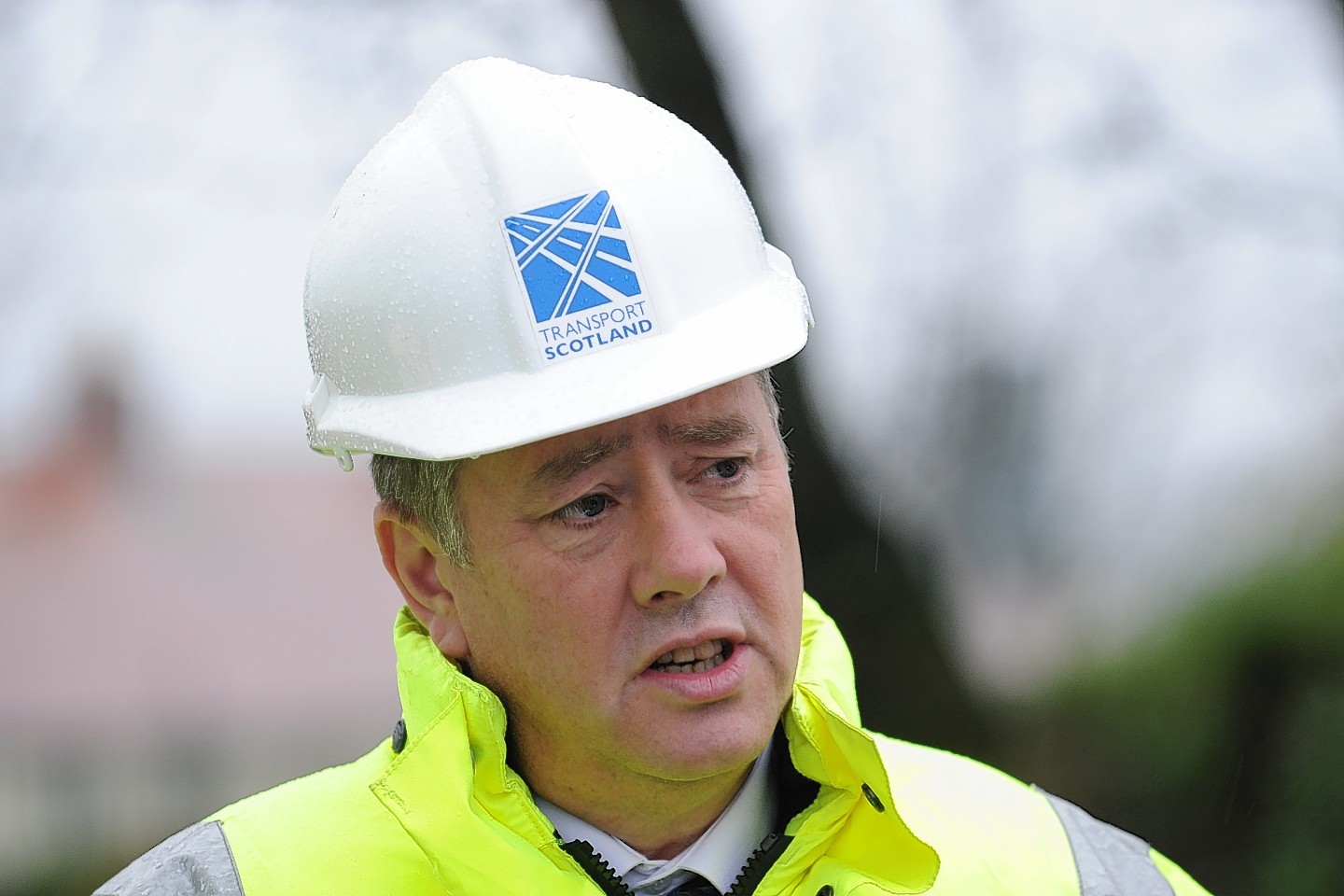A final piece of the jigsaw in the £3billion plan to dual the A9 will be unveiled by Infrastructure Secretary Keith Brown today.
Details of the third and last design contract for the upgrade of the remaining 80-mile stretch of the Inverness to Perth road are due to be announced in Edinburgh.
News of the £40million deal comes after the new transport minister gave a categoric assurance yesterday that controversial A9 speed cameras were operational.
Derek Mackay spoke out after campaigners challenged the authorities to publish speeding ticket statistics to prove they are actually switched on.
It later emerged that not all locations along the route are configured to be “live” at the same time. Instead, police can choose which enforcement sections they wish to activate, based on driver behaviour.
Mr Brown’s announcement today will concern the final contract, for the stretch of the A9 between Dalraddy and Inverness.
In August, the second of three contracts, for the 32-mile stretch between Pass of Birnam and Glen Garry, was awarded to international engineering firm Jacobs.
Each deal is estimated to be worth about £40million. The Scottish Government has said the entire project will be completed by 2025.
The controversy over the temporary average-speed cameras continued yesterday.
Mr Mackay, who was made transport minister in a recent reshuffle, stressed that the devices were working.
He said: “I have checked and they (the cameras) are on and they are absolutely operational.
“The road safety partnership is there to take a lead on this and in due course all relevant information will be published and that will show that the cameras are live and operational.
“I think the cameras are necessary and will improve road safety.”
Roy Brannen, director of trunk roads and bus operations at Transport Scotland, claimed the short-term release of speeding figures could put the whole operation of the camera system into “jeopardy”, because people would know which devices were active.
The committee heard that no information about the number of offenders caught would be released until next month and thereafter on a quarterly basis.
Mr Brown, meanwhile, told the committee that he had received a lot of feedback that the cameras had made the A9 a “less stressful drive” and people “feel more at ease” on the road.
He added that he was convinced that installing the system was “the right thing to do” and journey times had only increased slightly since the switch-on.
Mr Brown said he was aware of concerns that drivers were using alternative routes to dodge the cameras but knew of no short cuts, and claimed that usage of the A9 had actually increased by 5%.
But campaign spokesman Mike Burns said it was clear Mr Brown did not know the area very well if he believed there were no short cuts.
“If this system was working as well as they say they should release the figures – there is no reason not to because they are available at the touch of a button,” he said.
Mr Burns of Foyers said he did not agree with Mr Brown’s assessment that traffic levels on the A9 had increased. “I drive up through Glencoe on Sunday nights from Glasgow and I have never been caught in traffic before, but nowadays I am because it is diverting,” he said.
Lochaber, Badenoch and Strathspey MP Danny Alexander said many people had contacted him to say they have witnessed an increase in dangerous overtaking on the A9 and motorists were using B-roads as rat runs.
“The new transport minister had an opportunity to take a fresh look at the A9 speed cameras so it is disappointing he is unwilling to listen to the concern of Highlanders,” he said.
